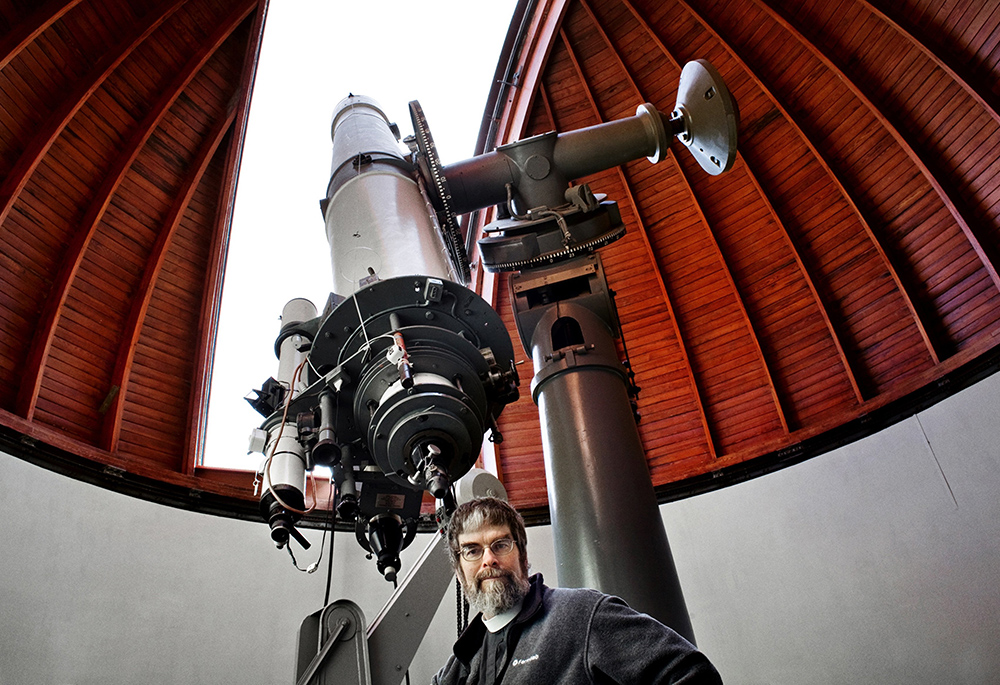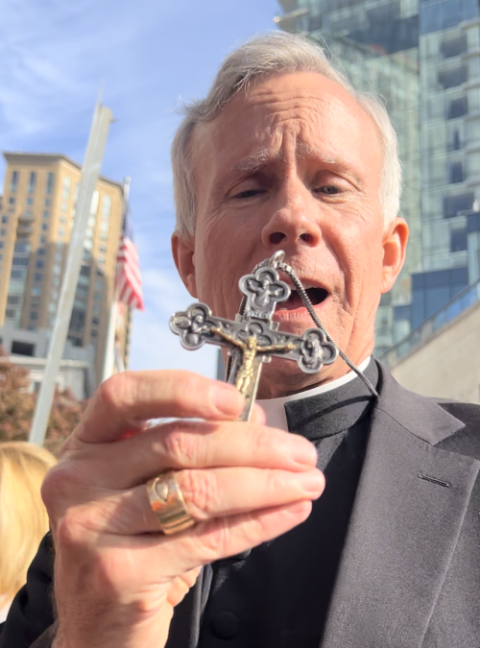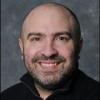
The Statue of Liberty is seen during a partial solar eclipse at Liberty Island April 8 in New York City. A partial eclipse was visible throughout all 48 contiguous U.S. states, while a total solar eclipse was visible along a narrow track stretching from Texas to Maine. (OSV News photo/Reuters/David Dee Delgado)
Donning special protective glasses, millions of Americans on Monday gazed into the heavens for an encounter with totality.
The cosmic drama that played out in the skies above moved many to tears. Some augured the moon's shadow silhouetting the sun as the perfect moment to take a knee and propose to their significant others.
The total solar eclipse prompted others, including a few Catholics, to think of more ominous omens.
"When the sun loses its light ... that is the unraveling of the cosmic created order that God the Father placed upon the universe through God the Son," Taylor Marshall, the far-right Catholic podcaster, said in a ten-minute YouTube video titled, "Solar Eclipse? Black Sun in the Apocalypse?"
Normally one to embrace conspiracy theories, Marshall presented actual scientific facts about the total solar eclipse, which is a rare astronomical event that occurs when the Earth, sun and moon align perfectly. Such a phenomenon won't be visible again in the United States until 2044.

Taylor Marshall is pictured in this screenshot, speaking during a 10-minute YouTube video titled "Solar Eclipse? Black Sun in the Apocalypse?" (NCR screenshot/YouTube/Dr Taylor Marshall)
Marshall later segued into a more apocalyptic telling of solar eclipses, linking them to Revelation's enigmatic descriptions of the end times. He also likened eclipses to foreshadowings of the Earth's final chapter and the "three days of darkness" that some Christian mystics believe will envelop the dying planet.
For viewers who wanted to learn more about eclipses and the end of the world, the Texas-based podcaster directed them to a book he wrote about the Antichrist and the apocalypse.
Other Catholic fringe voices were not going to let an opportunity pass Monday (April 8) without commenting on social media about the "most important eclipse of all," that being the "Eclipse of the Catholic Church" which they believe began with the Second Vatican Council.
Some far-right Catholic personalities were not in the mood to entertain eschatology in light of Monday's solar-lunar event.
"Are we irresponsible Christians if we don't feel the need to spin every solar eclipse into an apocalyptic YouTube video? (Asking for a friend)," Michael Matt, editor of The Remnant, a hardline traditionalist outlet, wrote on X, the platform previously known as Twitter.
The Catholic astronomers who staff the Vatican Observatory were more than willing to speak about the eclipse in scientific terms.
Br. Guy Consolmagno, a Jesuit who directs the Vatican Observatory, and Christopher Graney, a scholar at the observatory, discussed the history of solar astronomy, the significance of sunspots and how "shooting stars" happen during an hour-long webinar hosted by Jesuit Fr. James Martin, editor at large of America magazine.

U.S. Jesuit Br. Guy Consolmagno, director of the Vatican Observatory is pictured at the observatory in Rome in this Dec. 12, 2007, file photo. (CNS/Annette Schreyer)
Asked by Martin about the safety of special glasses for people who wanted to see the eclipse without burning their retinas, Consolmagno advised the would-be solar astronomers to be selective.
"Put [the glasses] on. If you can see anything, they're not dark enough," Consolmagno said.
Advertisement
Speaking of darkness, the temporary loss of sunlight for communities in the "path of totality" was one of several awe-inspiring features that inspired people of several religious faiths, and none, to see the eclipse through a spiritual lens.
Media outlets across the country reported how Wiccans and self-described "witches" planned to engage in various rituals during what they understood would be a "supercharged" event of cosmological energy.

Bishop Joseph Strickland shows his pectoral cross on Nov. 14, 2023. (NCR photo/Brian Fraga)
Those nontraditional rituals prompted commentators like Alex Jones, the disgraced far-right conspiracy theorist, to warn about potential plots by Freemasons and "globalists."
To "counter expected satanic activity," Bishop Joseph Strickland planned to celebrate Mass during the eclipse, which was to be livestreamed by LifeSiteNews, the far-right Catholic outlet that has provided a platform for Strickland since he was removed from the leadership of the Diocese of Tyler, Texas, in November.
Writing about Strickland's plan to offer a special liturgy during the eclipse, Fr. Stephen Vrazel, a priest in the Mobile, Alabama, Archdiocese, wrote on X that one reason why he wished more people would see the eclipse was "so that everyone would stop being so dang WEIRD about it."






